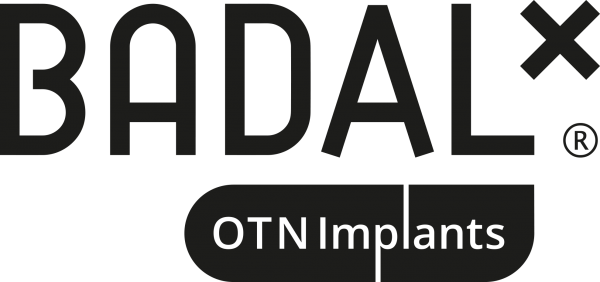BADAL X™
The Bone Anchoring Device for Artificial Limbs (BADAL X™) is a modular medical device to be used as a permanent transcutaneous (through the skin) fixation system to directly connect an exoprosthetic lower limb (artificial leg) to the upper- and/or lower leg bone in respectively above- and below knee amputees. The BADAL X attachment method is also known as osseointegration and is an alternative for the conventional attachment of artificial limbs with a stump socket.
The advantage of BADAL X™ for amputees
In Europe, there are around 150.000 major lower limb amputations per year (source: Hughes et al. Eur J Vasc Endovasc Surg (2020)). Approximately one-third of persons with lower limb amputation have chronic skin problems associated with socket attachment of the prosthetic limb (Meulenbelt et al, Arch Phys Med Rehabil, 2009). These socket problems often cause serious limitations of mobility and quality of life and as a result, 50% of the people with above knee amputation do not use or use their prosthesis less than 7 hours per day (Pohjolainen et al, POI 1990). Despite new materials and improved sockets designs, socket problems remain an important burden because the socket attachment is a very weak and unnatural interface between prosthesis and the human body.
The bone anchoring (osseointegration) concept
Transcutaneous bone anchoring of artifical limbs is a relatively new concept to avoid these problems. Though attaching a prosthesis to the skeleton is well established in dentistry it is relatively new in the field of amputee care. In the past three decades bone anchoring or osseointegration devices has begun to be established in the field of extremity amputation, primarily in European countries. With these devices, the artificial leg is transcutaneously attached to the human skeleton using an intramedullary metal implant into the bone. Bone anchoring devices for artificial limbs have been shown to have significant improvements regarding walking distance, prosthetic use, energy expenditure during walking, and quality of life (Van de Meent et al. Arch Phys Med Rehab 2013).
BADAL X and amputee care
Bone anchoring devices for amputees are on the European market for 3 decades now. This health care product is acknowledged by health care authorities in several European countries. Dental implants are very common nowadays but bone anchoring devices are still not very well acquainted among amputees and health care providers. Therefore, there is still a world to win to bring the device to the attention of potential users because BADAL X™ is revolutionary breakthrough for mobility and quality of life for persons with lower limb amputation.
BADAL X™ and amputation level
BADAL X™ consists of a press fit implants with an extensive range of implant types and sizes and is therefore suitable for all above and below knee amputation levels. This means that the application area of BADAL X™ is much broader than the application area of the competitive devices. Another advantage of BADAL X™ is that it consists of a press fit titanium implant with a very rough surface which allows solid and rapid osseointegration in 4 to 6 weeks. This provides a very short rehabilitation until the ability of full weight bearing on the device.
Candidates for BADAL X
Clinical trials have shown that BADAL X™ is safe and offers clearly better mobility, less complaints and significant better quality of life (Attalah et al, Plos One, 2020). Persons with lower limb amputation that suffer from problems associated with socket attachment of their prosthesis are perfect candidates for BADAL X™.
Where is BADAL X available?
OTN Implants supports and supplies a network of clinics that are specialized in the BADAL X implantation technique. If you interested in BADAL X, see here where I can go for consultation or please fill in the contact form.

